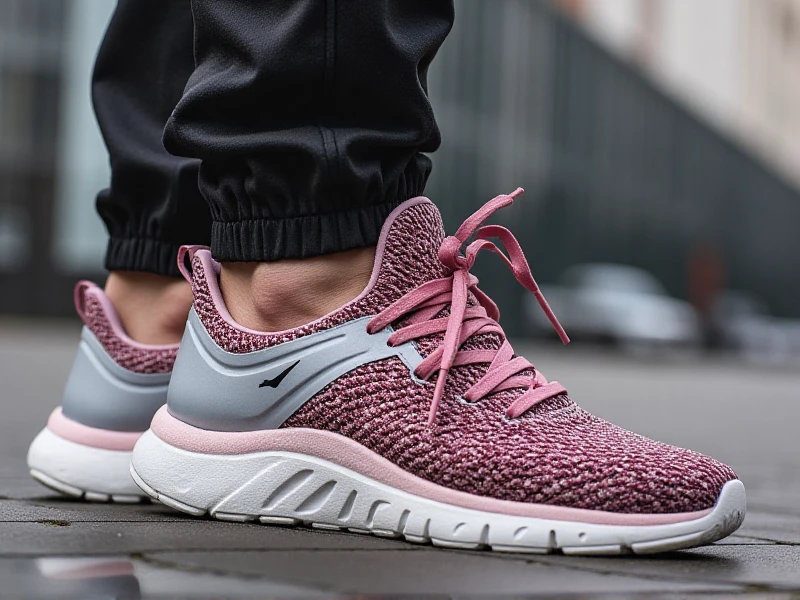Men's Running Shoes: The Ultimate Guide to Unlock Your Peak Performance
2025-06-07

Here's an SEO-optimized article targeting the keyword "men's running shoes":
URL Suggestion: yourdomain.com/mens-running-shoes-guide
Finding the perfect pair of men's running shoes is about far more than just fashion; it's fundamental to your comfort, performance, and injury prevention on the road or trail. With countless options available, navigating the features can feel overwhelming. This guide cuts through the noise, helping you understand the essential factors to choose the ideal performance footwear designed for the male runner.
Why the Right Men's Running Shoe Matters
Running places significant stress on your feet, ankles, knees, and hips. The primary job of a quality running shoe for men is to absorb impact effectively, provide stability and motion control tailored to your gait, and offer enough flexibility where you need it. An ill-fitting or improperly chosen shoe can lead to blisters, shin splints, plantar fasciitis, or more serious injuries, derailing your training goals. Investing time in selecting the correct shoe is an investment in your running longevity.
Key Types of Men's Running Shoes Explained
1. Cushioning/Neutral Shoes: Designed for runners with efficient biomechanics (neutral pronation) who need maximum shock absorption. Models like the Nike Air Zoom Pegasus or ASICS Gel-Nimbus excel here. Ideal for moderate to high-mileage runners seeking plush comfort on roads.
2. Stability Shoes: Aimed at runners who overpronate – where the foot rolls inward excessively. These shoes incorporate medial (inner side) support technologies like firmer foam or guiding rails (e.g., Brooks Adrenaline GTS, Saucony Guide) to correct alignment and prevent collapse.
3. Motion Control Shoes: Offer the highest level of stability for severe overpronators or heavier runners needing maximum support. Features are more rigid and structured (e.g., ASICS GT-2000 series).
4. Lightweight/Racing Flats: Prioritize minimal weight and energy return for speed workouts and race day. Offer less cushioning and support, demanding strong biomechanics (e.g., Saucony Endorphin Speed, New Balance FuelCell Rebel).
5. Trail Running Shoes: Built for off-road adventures with aggressive lugs for grip, protective rock plates underfoot, and durable, often water-resistant uppers (e.g., Salomon Speedcross, Hoka Speedgoat).
Essential Factors When Choosing Your Men's Running Shoes
1. Foot Type & Gait Analysis: Understanding whether you have a neutral arch, flat feet (often overpronates), or high arches (often underpronates/supinates) is paramount. Get professionally fitted at a specialty running store where gait analysis is offered. Don't assume you need stability just because you're new!
2. Running Surface: Where will you run most? Road shoes prioritize smoothness and cushioning. Trail shoes provide grip and protection on uneven terrain. Some hybrids work for both.
3. Mileage & Goals: High-mileage marathon trainers need more durability and cushioning. Low-mileage or speed-focused runners might prefer lighter, more responsive options.
4. Fit is Non-Negotiable: Always prioritize fit over brand or hype.
Sizing: Men's running shoes often require at least a half to full size larger than dress shoes. Your longest toe needs a thumbnail's width of space.
Width: Ensure adequate width across the forefoot and midfoot. Brands offer different widths (Standard/D, Wide/2E, Extra Wide/4E).
Heel Lockdown: Your heel should be snugly held without slippage.
Try Them On: Walk and, if possible, jog around the store. Bring the socks you run in.
The Latest Innovations in Men's Performance Footwear
Engineered foams have become the game-changers. Materials like nitrogen-infused TPU (Nike ZoomX), supercritical EVA/Pebax (Saucony PWRRUN PB, Hoka Profly , New Balance FuelCell), and tailored PU foams (Brooks DNA LOFT v3, ASICS FF BLAST ) offer incredible energy return while staying lightweight and durable. Brands constantly refine geometry too, incorporating carbon fiber plates or advanced rockers to aid toe-off efficiency in premium performance models.
Caring for Your Men's Running Shoes
To maximize lifespan and performance:
Rotate at least two pairs to allow cushioning foam to fully rebound.
Avoid excessive exposure to heat or direct sunlight.
Use them primarily for running to preserve their structure.
Replace after 300-500 miles (depending on runner weight, surface, and shoe type) when cushioning feels compressed or tread wear is excessive.
Finding Your Perfect Fit
The market for top-quality men's running shoes is vast and innovative. The single best tip is to visit a specialty running store staffed by knowledgeable experts. They will assess your gait, foot shape, goals, and preferences to recommend several suitable options from leading brands like Brooks, Saucony, ASICS, Nike, New Balance, and Hoka. Trying on multiple pairs and moving in them is essential. Remember, comfort during the run is king, not just standing still.
Invest wisely in your men's running shoes. They are the crucial interface between you and the ground, setting the stage for miles of enjoyment and peak performance. Get fitted, find what feels best for you, and hit the road or trail with confidence. What's the biggest challenge you've faced finding the right running shoe? Share below!
Category: